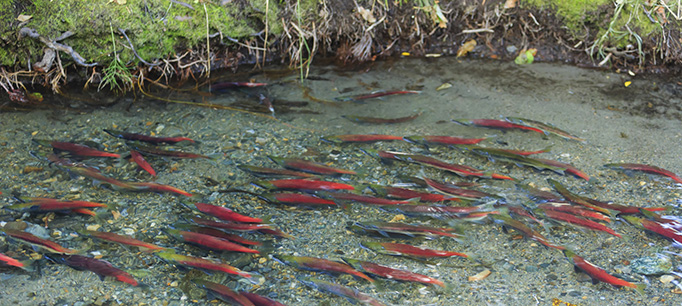We know that California’s aquatic species are at risk from a host of stressors and that drought pushes them closer to the brink. Yet there are significant gaps in our understanding of key factors affecting ecosystem health that make it difficult to effectively manage water for the natural environment. Good practices from other dry places offer lessons for protecting our struggling species and improving conditions in troubled ecosystems.
Water accounting―tracking how much is there, who has claims to it, and what is actually being “spent”―can provide a clearer picture of how and when to allocate water for the environment. Other states have improved their water information systems and reduced environmental problems.
For example, the Colorado Water Conservation Board has a network of high-tech stream gages to monitor freshwater ecosystems. These gages send text or email alerts to state environmental water managers within minutes of approaching low-flow conditions. Staff can respond quickly by requesting an evaluation of priority water needs among local water users and, where possible, shifting water to meet environmental needs.
By comparison, California lacks stream gages on half of the rivers and streams that support critical habitats. This makes active management of environmental water during droughts very difficult, if not impossible, in many parts of the state.
Better accounting can also help us prepare for drought, rather than just respond to it. Making better use of water during average and wet years can stabilize or enhance at-risk ecosystems. This increases their resilience to drought.
For example, drought-prone Victoria, Australia, uses sophisticated water accounting tools to coordinate environmental flows for all types of water years. Victoria also collects and organizes information on a number of critical ecological indicators for thousands of miles of streams and wetlands. This inventory informs Victoria’s short- and long-term decision making about where and when water will be most beneficial to ecosystems and thus helps build drought resilience.
California has a significant body of research on freshwater ecological indicators, but the information isn’t organized in ways that make it readily useful to environmental water managers.
Managing water for the environment is more than a technical challenge. It’s a social process that relies on complex decisions made by water users, regulators, and other stakeholders. Examples from other arid regions suggest that this social process is improved by having access to accurate and timely information. Strengthening water accounting in California is key to improving our ability to manage water for the environment and building the social license necessary to act. Before the next drought pushes more freshwater species to the brink, we would be wise to follow the lead of other semi-arid regions and invest in accounting systems that improve our understanding and management of our rivers and streams.
Read the report Accounting for California’s Water (July 2016)
Read “Three Lessons on Water Accounting for California” (PPIC Blog, August 8, 2016)
Visit the PPIC Water Policy Center



